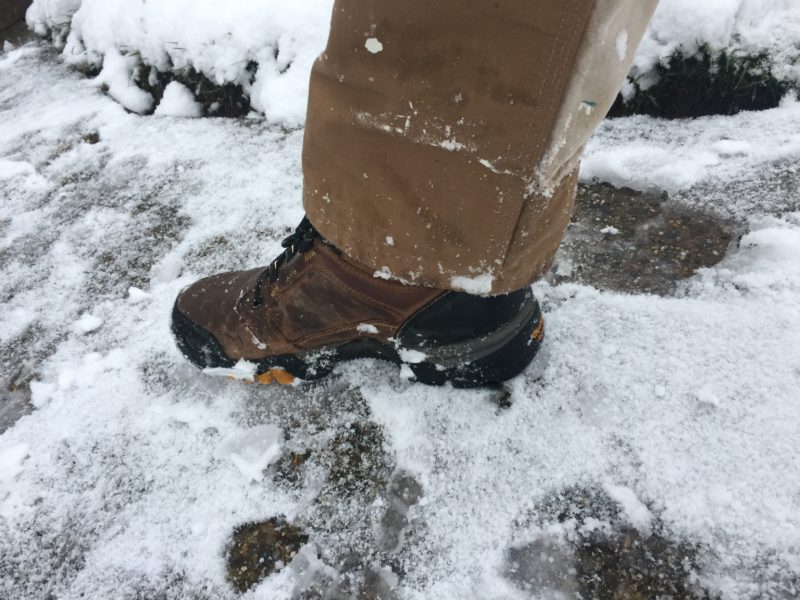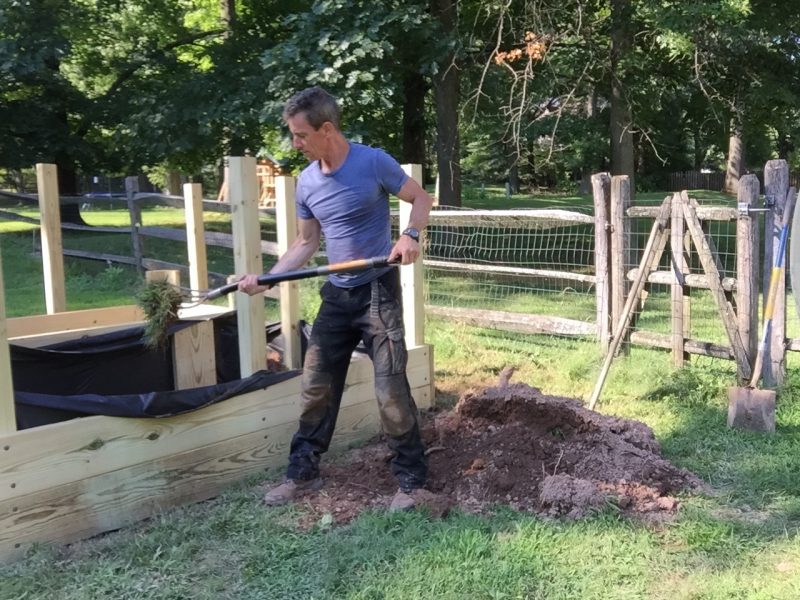
Two-Sentence Tool Review: There’s no Missouri Mammy Cackle in the Georgia Boots Amplitude hiker; there’s little doo-daddery to fail and it meets metrics on the comfy-rugged balance in impressive style. Combined with the 100% guaranteed waterproofing, they Tony the Tiger gah-rate! Now here’s more nitty gritty if you want itty.

When I see a pair of boots that costs more than a circular saw I could literally own for 20-years, I just can’t wrap my head around it. Seems like a machine should cost more. Or the boots less.
On the other hand, the boots have a different job to do than the saw. The boots are never off duty during the work day. They’re hot, cold, warm, wet, dry, up, down, getting the arch rammed into a shovel to dig a hole (watch this amazing video on how to dig a hole). The power tool is on-again-off again.
And maybe it’s just not a fair comparison and I’m an idiot.
Let’s start over.

Because I like the Georgia Boot Amplitude, a 6-inch hiker style boot that I’d call “job site-ready”.
Because I’m thick-headed, I put myself in a bad-boot vortex trying to cheap out. I was instantly unhappy with the cheap boots I got where I thought I was hacking the boot system (there’s no boot system, right?). Even at $170—not uncommon for a pro-grade kicker—I should be grateful the Georgia Boot is on my feet.
With a sweet mesh lining, padded upper, and a ankle notch for the Achille’s tendon (extra sweet detail) the Amplitude was both instantly more comfortable—and remained so for months of daily wear from office to truck to ladder to work site—than the cheap-O schmeap-O boots.
Additionally, the Amplitude has Georgia Boot’s 100% waterproof guarantee. It worked great! Like Tony the Tiger great. I didn’t even know these boots were waterproof until I started the researching for the review. No soggy socks on wet mornings or mowing post-rain grass. No swamp-foot either, like my piggies had been wrapped in a trash bag all day. That’s good stuff. And that’s the tech that I think is wrapped up in the price tag, even though it’s “just a boot”.

Beyond the waterproofing, the upper is “full grain” leather. I don’t really know what that means, but I do know it’s what I’d call work boot leather. I’ve seen and owned many similarly styled and priced hikers that are just that: Hikers. They cross-over to the job site for a while, but in my experience when the glitter starts wearing off, it wears off fast. More fabric than leather-based, the racing stripe, functionless over-molded rubber Missouri Mammy Cackles made to look good, not do anything, fail fast. Meshy toe-pockets or whatever doo-daddery is on typical hikers is more industrial-design than industry and it falls off. In other words, “chrome don’t get you home.”
The GB toe and heel overmolds are rubber, but they are sewn on and in the time I used them, showed only a little signs of wear or giving up the ghost. Impressed.
The sole, for 99% of the time, is fine. Somewhere between the deeply treaded hiker and the (typically) not-so-deeply treaded traditional work boot, it can hold mud. For the most part, who cares? Nevertheless, there are those inside/outside jobs (cut stations set-up outdoors, landscape or deck or pergola projects with components that require you to be inside, needing more coffee or to go tinkle, &c.) where dirt becomes your chem-trail in the house. It’s not a demerit, it’s just worth pointing out. Maybe you need a drop cloth or some other provision for the inevitable trail.
The top eyelet for the laces is a hook. More often than knot (get it?), this is a troubling feature for me on a work boot. The reason is that when I’m knelt down with my feet under me to do something like install base molding or make a repair, those hooks have dug into wood floors without my knowledge. These, I barely noticed.
And that’s one of the things about comfort and progress: Sometimes the best kind is the kind you barely notice. These boots are all-on, all the time.
Georgia Boots Price: $170
Worth it? Yes.

